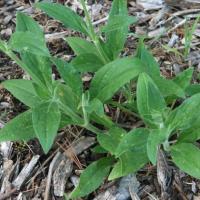White campion
Silene latifolia
Silene latifolia, commonly known as White Campion, is a herbaceous flowering plant belonging to the Caryophyllaceae family. It is native to Europe but has become naturalized in various parts of the world. White Campion is known for its attractive white flowers and adaptability to different environments. Here's an informative description of this plant:
Description:
-
Plant Structure:
- Size: White Campion typically grows to a height of about 1 to 3 feet (30 to 90 cm).
- Growth Form: It has a bushy, erect stem with opposite leaves.
-
Leaves:
- Leaf Type: The leaves are lanceolate to elliptic, opposite, and often have a grayish-green hue.
- Arrangement: Leaves are arranged in pairs along the stem.
-
Flowers:
- Inflorescence: The flowers of White Campion are typically white, although they can occasionally be pink.
- Flower Structure: Each flower has five deeply notched petals and is borne in clusters at the ends of stems.
-
Habitat:
- White Campion is adaptable and can be found in a variety of habitats, including meadows, fields, roadsides, and disturbed areas.
- It is often associated with disturbed or cultivated soils.
Identification:
- Flower Characteristics: The clusters of white or pink flowers with deeply notched petals are a key identifier.
- Opposite Leaves: The arrangement of opposite leaves along the stem is distinctive.
Ecological Role:
- Pollination: White Campion attracts pollinators, including moths and bees.
- Seed Production: The plant produces capsules containing numerous seeds, contributing to its reproductive success.
Management:
-
Cultural Control:
- White Campion is often managed through cultural practices such as mowing in agricultural settings.
-
Prevention:
- Monitoring and preventing the establishment of large populations in sensitive areas.
Note: While White Campion is considered a weed in some agricultural contexts, it is also valued for its role in supporting pollinators and its adaptability to different environments.











